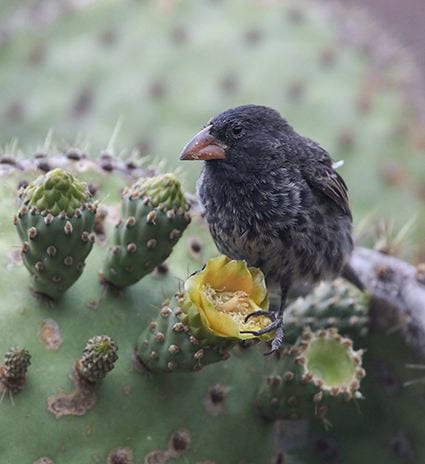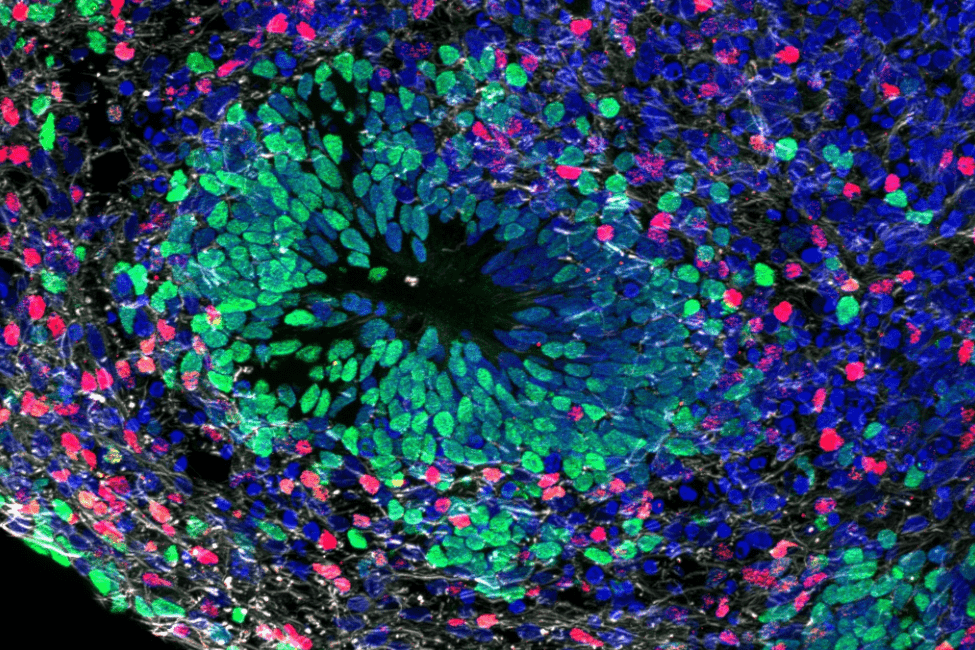Category: News
-

Detecting Cancer Early by Measuring RNA in the Blood
Genomics Institute affiliate Daniel Kim explains how markers in RNA can help create new tests for early cancer detection. Read in Scientific American. “Early detection of cancer has been shown to save lives,” says Daniel Kim. “And so we really want to be able to diagnose it early, before it spreads to other parts of…
-

Working to improve clarity for patients assessing their genetic breast cancer risk
“I would say there are 2,500 variants conservatively that we hope to be able to curate right off the bat based on these assessments,” Cline said. “For women who carry these variants, that means not carrying the uncertainty.”
-

Smart Gateways into the Lab of the Future
The UC Santa Cruz Braingeneers are using cutting-edge smart technologies to streamline their research on human brain ogranoids and learn more about what makes humans unique. Listen to Deanna MacNeil from The Scientist’s podcast interview UCSC Braingeneers Sofie Salama and David Haussler about the smart technology behind growing brain organoids.
-

Genome study reveals 30 years of Darwin’s finch evolution
An international team of researchers has released a landmark study on contemporary evolutionary change in natural populations. Their study uses one of the largest genomic datasets ever produced for a wild animal, comprising nearly 4,000 Darwin’s finches, to reveal the genetic basis of adaptation in this iconic group.
-

Biotech founder and hero of the Human Genome Project joins UC Santa Cruz Genomics Institute as Executive Director
After an extensive national search, the UC Santa Cruz Genomics Institute has selected a bold new executive director to lead their next phase of expansion and innovation. Dr. Lauren Linton is a scientist, entrepreneur, and executive with experience leading institutions in genomics, pharmaceutical and diagnostic development, biotechnology, entrepreneurship, and innovation.
-

UCSC’s David Deamer and Mark Akeson honored for invention of nanopore sequencing
Today, two UC Santa Cruz researchers were honored at the Library of Congress for the invention of nanopore sequencing, which became a new and revolutionary method to read DNA and RNA. David Deamer and Mark Akeson, both emeritus professors of biomolecular engineering at the Baskin School of Engineering, received the American Association for the Advancement…
-

Human Pangenome Named a GA4GH Driver Project
GA4GH Driver Projects are real-world initiatives that help build and implement GA4GH standards, tools, and frameworks. They give voice to the broader genomics community and ensure GA4GH products serve real needs.
-

Innovation Catalyst Grants Fund Braingeneers Research
Haussler and Teodorescu were awarded $50,000 for their work in developing a revolutionary approach to cell culture that allows for more efficient testing on human organoids. Their innovation promises to significantly enhance the realism and scalability of experiments in biological research and will allow for new discoveries in cancer treatment, stroke, heart attack, and brain…
-

Yatish Turakhia one of “35 innovators under 35”
Former Genomics Institute postdoc Yatish Turakhia has been chosen as one of MIT Technology Review’s 2023 Innovators Under 35, in part for software tools he created at UC Santa Cruz to help track the Covid-19 pandemic. He is now evolving those tools so they can be used with other diseases.
-

New protocols make long-read sequencing feasible on larger scale
Researchers at UC Santa Cruz’s Computational Genomics Lab and their collaborators have released new wet-lab and computational protocols that will make long-read sequencing feasible for large genomics projects. These protocols, which they have already implemented in a National Institute of Health project for Alzheimer’s research, will allow researchers to characterize regions of the genome that…
-

Novel device combines nanopores with electronic signals for disease detection
In living organisms, cells have a very high capacity to process and communicate information by moving molecules or ions through tiny channels that span the cell membrane. UC Santa Cruz Professor of Electrical and Computer Engineering Marco Rolandi’s lab and collaborators at MIT have created a device that mimics this biological concept in order to…
-

GREAT program creates new opportunities for students to participate in research
In the UC Santa Cruz Paleogenomics Lab, NSF postdoctoral fellow Andrew Sharo is using DNA from 100-year-old samples of steelhead trout to study how their populations have changed over time. It is important work — in California, local steelhead populations are endangered or threatened, and the answers Sharo finds in their genomes could help us…